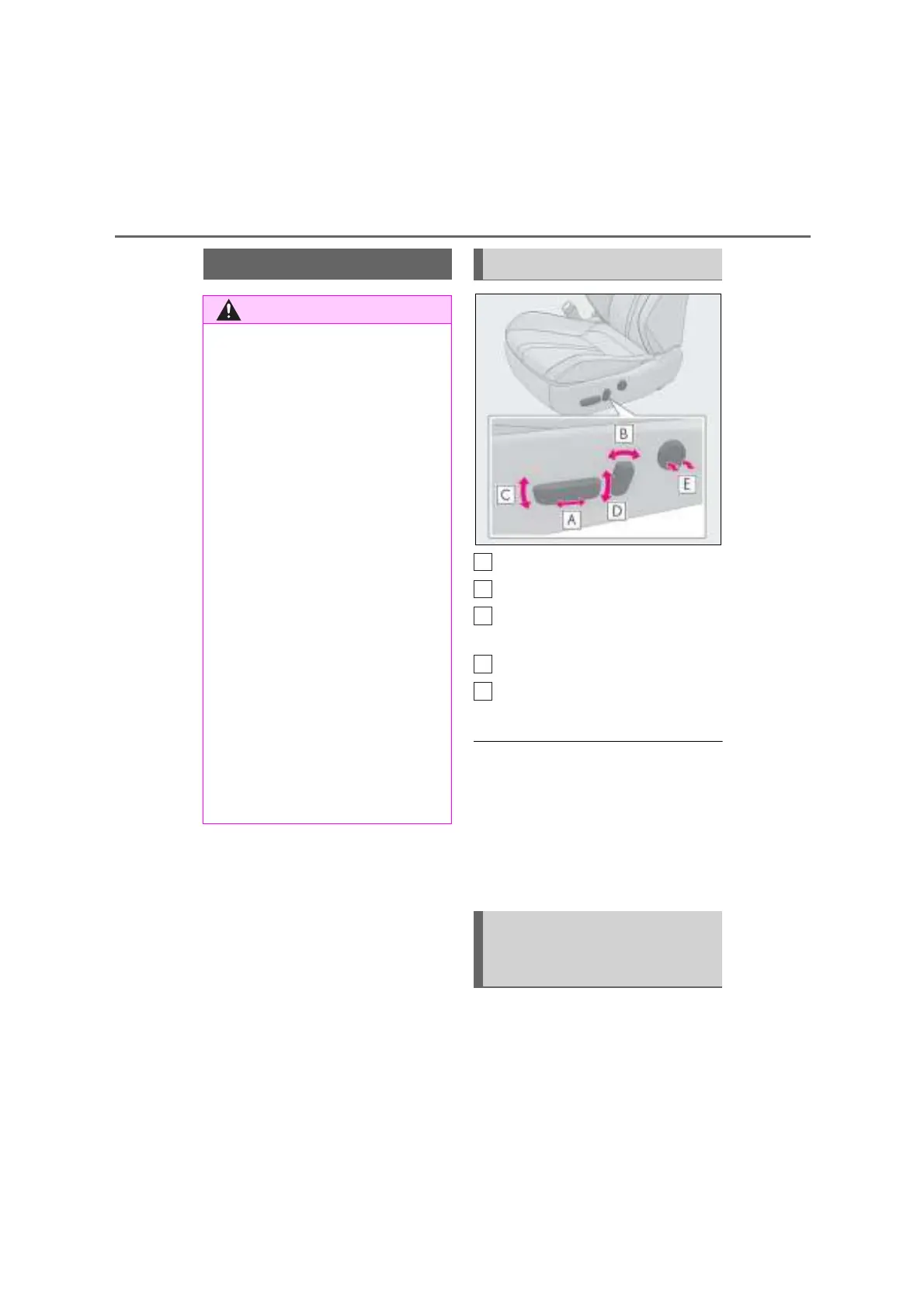134
RCFOM(GE)1903
3-3. Adjusting the seats
3-3.Adjusting the seats
Seat position adjustment
Seatback angle adjustment
Seat cushion (front) angle adjust-
ment
Vertical height adjustment
Lumbar support adjustment
(driver’s seat only)
■
Power easy access system
The driver’s seat and steering wheel move
in accordance with engine switch mode and
the driver’s seat belt condition. (P.136)
■
When adjusting the seat
Take care when adjusting the seat so that
the head restraint does not touch the ceil-
ing.
■
Before entering/exiting the rear
seats
Remove the seat belt from the seat belt
Front seats
■
When adjusting the seat position
●
Take care when adjusting the seat
position to ensure that other passen-
gers are not injured by the moving
seat.
●
Do not put your hands under the seat
or near the moving parts to avoid
injury.
Fingers or hands may become jammed in
the seat mechanism.
●
Make sure to leave enough space
around the feet so they do not get
stuck.
■
Seat adjustment
To reduce the risk of sliding under the lap
belt during a collision, do not recline the
seat more than necessary.
If the seat is too reclined, the lap belt may
slide past the hips and apply restraint
forces directly to the abdomen, or your
neck may contact the shoulder belt,
increasing the risk of death or serious
injury in the event of an accident.
Adjustments should not be made while
driving as the seat may unexpectedly
move and cause the driver to lose control
of the vehicle.
Adjustment procedure
Entering/exiting the rear seats
(lever-operated “Front, Fold &
Return” seat)

